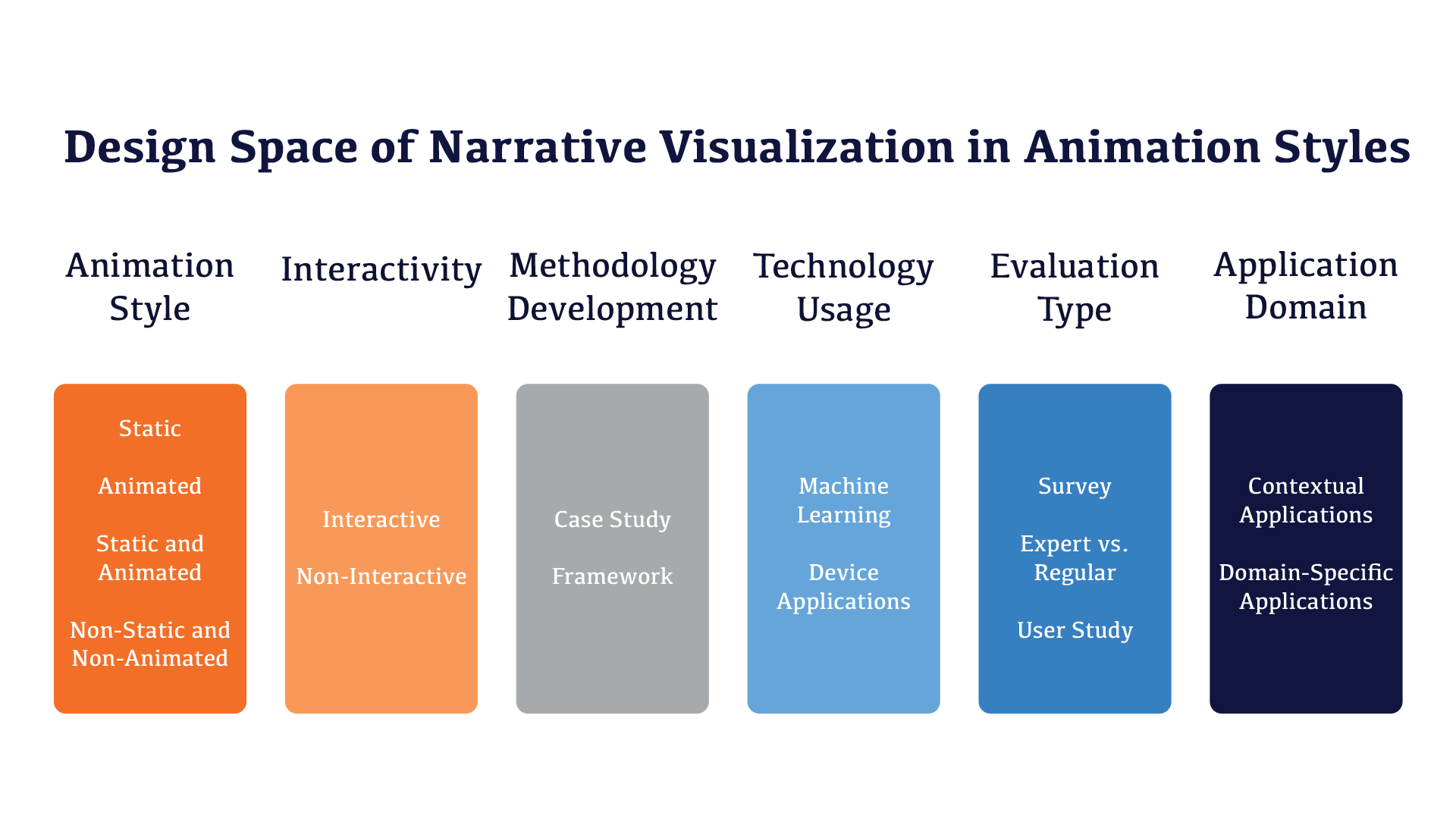Animating the Narrative: A Review of Animation Styles in Narrative Visualization
Vyri Junhan Yang - Louisiana State University, Baton Rouge, United States
Mahmood Jasim - Louisiana State University, Baton Rouge, United States
Room: Bayshore III
2024-10-17T18:45:00ZGMT-0600Change your timezone on the schedule page
2024-10-17T18:45:00Z

Fast forward
Full Video
Keywords
Narrative visualizations, static and animated visualization, categorization, design space
Abstract
Narrative visualization has become a crucial tool in data presentation, merging storytelling with data visualization to convey complex information in an engaging and accessible manner. In this study, we review the design space for narrative visualizations, focusing on animation style, through a comprehensive analysis of 80 papers from key visualization venues. We categorize these papers into six broad themes: Animation Style, Interactivity, Technology Usage, Methodology Development, Evaluation Type, and Application Domain. Our findings reveal a significant evolution in the field, marked by a growing preference for animated and non-interactive techniques. This trend reflects a shift towards minimizing user interaction while enhancing the clarity and impact of data presentation. We also identified key trends and technologies shaping the field, highlighting the role of technologies, such as machine learning in driving these changes. We offer insights into the dynamic interrelations within the narrative visualization domains, and suggest future research directions, including exploring non-interactive techniques, examining the interplay between different visualization elements, and developing domain-specific visualizations.